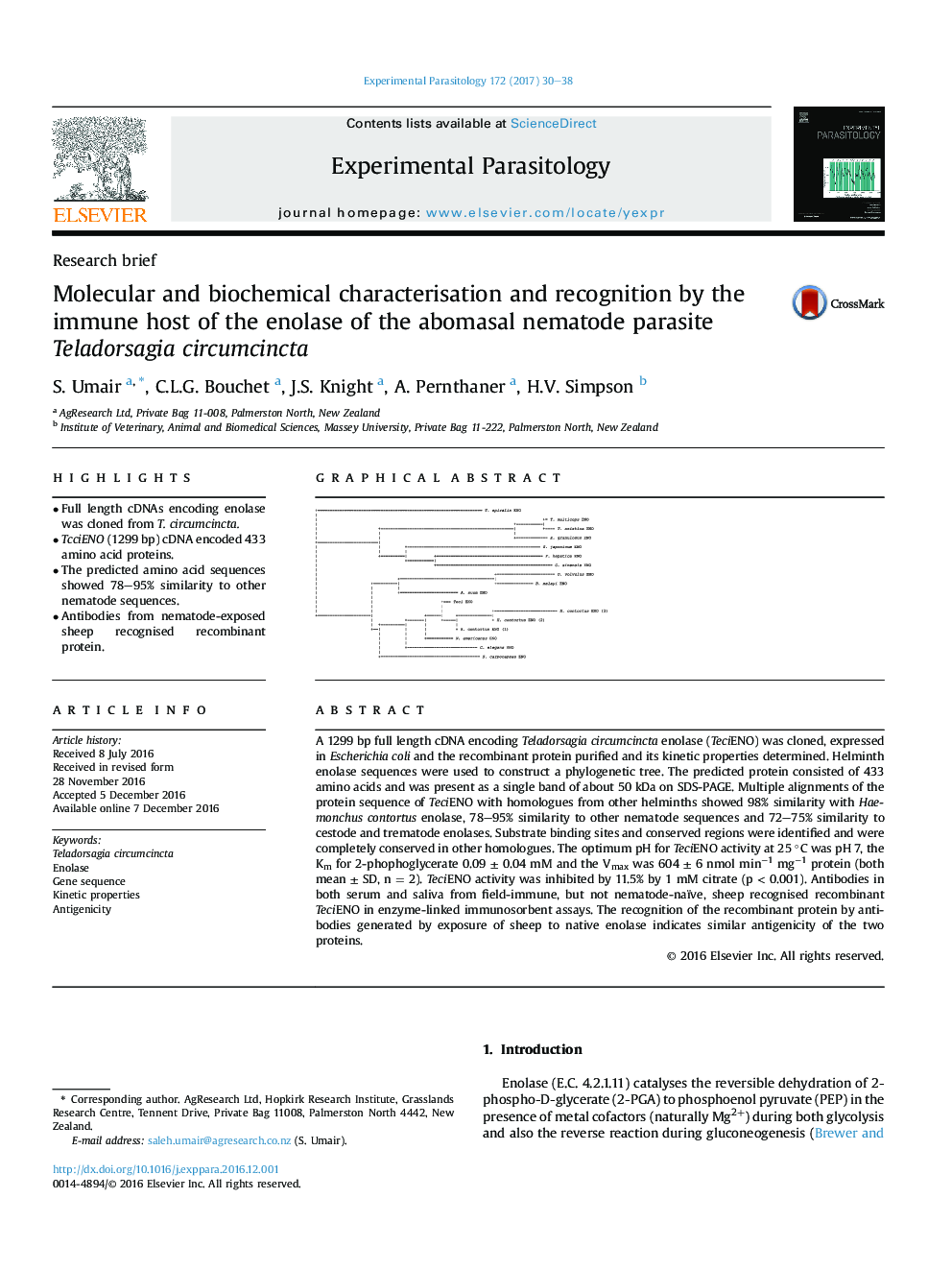| Article ID | Journal | Published Year | Pages | File Type |
|---|---|---|---|---|
| 5741179 | Experimental Parasitology | 2017 | 9 Pages |
â¢Full length cDNAs encoding enolase was cloned from T. circumcincta.â¢TcciENO (1299 bp) cDNA encoded 433 amino acid proteins.â¢The predicted amino acid sequences showed 78-95% similarity to other nematode sequences.â¢Antibodies from nematode-exposed sheep recognised recombinant protein.
A 1299 bp full length cDNA encoding Teladorsagia circumcincta enolase (TeciENO) was cloned, expressed in Escherichia coli and the recombinant protein purified and its kinetic properties determined. Helminth enolase sequences were used to construct a phylogenetic tree. The predicted protein consisted of 433 amino acids and was present as a single band of about 50 kDa on SDS-PAGE. Multiple alignments of the protein sequence of TeciENO with homologues from other helminths showed 98% similarity with Haemonchus contortus enolase, 78-95% similarity to other nematode sequences and 72-75% similarity to cestode and trematode enolases. Substrate binding sites and conserved regions were identified and were completely conserved in other homologues. The optimum pH for TeciENO activity at 25 °C was pH 7, the Km for 2-phophoglycerate 0.09 ± 0.04 mM and the Vmax was 604 ± 6 nmol minâ1 mgâ1 protein (both mean ± SD, n = 2). TeciENO activity was inhibited by 11.5% by 1 mM citrate (p < 0.001). Antibodies in both serum and saliva from field-immune, but not nematode-naïve, sheep recognised recombinant TeciENO in enzyme-linked immunosorbent assays. The recognition of the recombinant protein by antibodies generated by exposure of sheep to native enolase indicates similar antigenicity of the two proteins.
Graphical abstractDownload high-res image (142KB)Download full-size image
